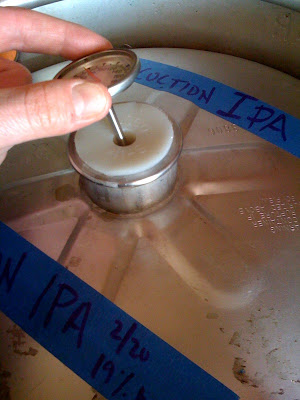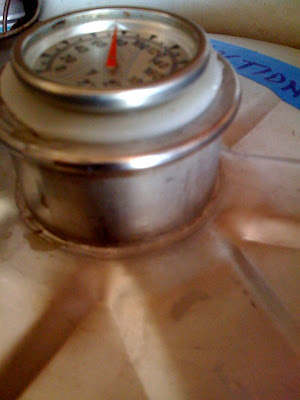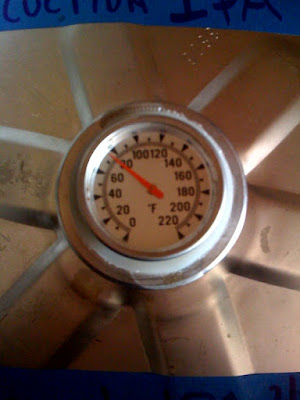flyangler18
Well-Known Member
Duh, could just put the bucket in a larger bin to catch everything.
Bingo. We have a winner.

Duh, could just put the bucket in a larger bin to catch everything.
I can't see too much air exchange going on once the CO2 blanket gets formed. I'm guessing that once that happens there is a whole lot of CO2 above the starter, and not much else.
But I do agree that there is no need for airlock and that foil would be easier and just as safe for contamination (unless you feel the need to pull that foil off every other hour for whatever reason...)










![Craft A Brew - Safale S-04 Dry Yeast - Fermentis - English Ale Dry Yeast - For English and American Ales and Hard Apple Ciders - Ingredients for Home Brewing - Beer Making Supplies - [1 Pack]](https://m.media-amazon.com/images/I/41fVGNh6JfL._SL500_.jpg)
I may not be an expert on starters but I would tend to agree with Homercidal. CO2 is heavier than O2 it will stay in the flask. I don't think the stir plate will mix the O2 into the CO2 all that well. I think my next starter I will hit the starter every few hours with the O2 tank and stone see if there is a difference
Not that the rest of your points are not correct, but not so sure about this. It's not like there's a check valve built in. As far as I know, the only reason that they have a direction arrow is so that you don't flip it in subsequent uses and put the contaminated side in. Anyone know for sure?Those puppies (the ones I use in the lab anyway) are designed for a one way air flow.
PseudoChef has been trying to sell us on tinfoil for a while.
PseudoChef has been trying to sell us on tinfoil for a while.
Well, +1 for foil. Consider me signed up after I just shoved a stupid rubber stopper so far into my carboy I don't know how the heck I'm getting it out. I'm sold on tinfoil.
By keeping the yeast on the stirplate, you're delaying fermentation. When the yeast switch from an aerobic to anaerobic phase, then fermentation starts.
I know a stirplate mixes the air and Co2 very well, just put some water in, get a 1L vortex and blow some smoke in the flask.
Well, +1 for foil. Consider me signed up after I just shoved a stupid rubber stopper so far into my carboy I don't know how the heck I'm getting it out. I'm sold on tinfoil.
It's not keeping them in motion that does it, it's the constant exposure to oxygen. When yeast have oxygen available they use that and the maltose to create water, CO2, and more yeast cells...obviously this is the reproductive stage. But once the oxygen is used up (or they have created enough cells) they will switch to creating alcohol and CO2. Keeping them in motion just allows them to have easy access to the sugars and nutrients they need to work.I didn't know that by keeping it in motion it wouldn't switch to anaerobic.
I didn't know that by keeping it in motion it wouldn't switch to anaerobic


